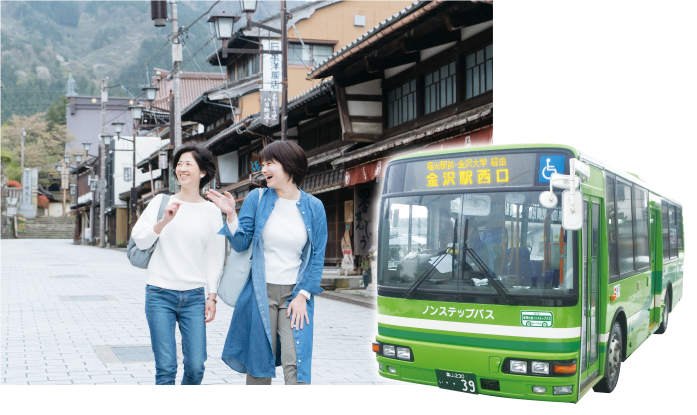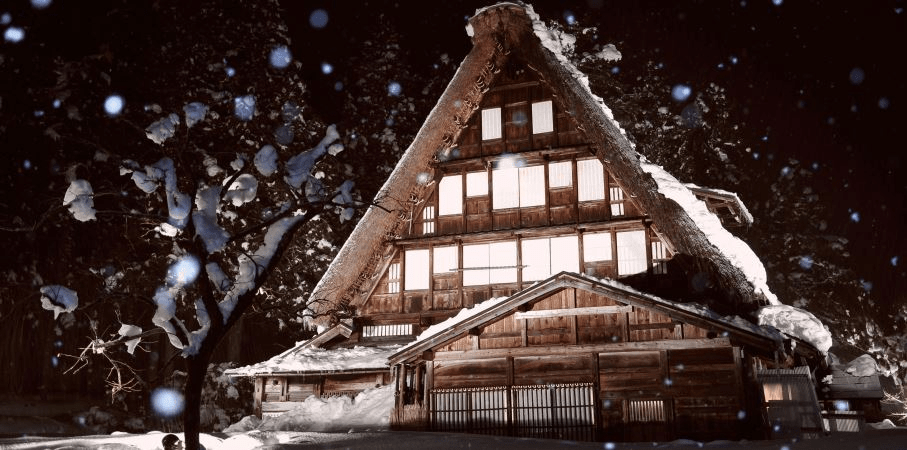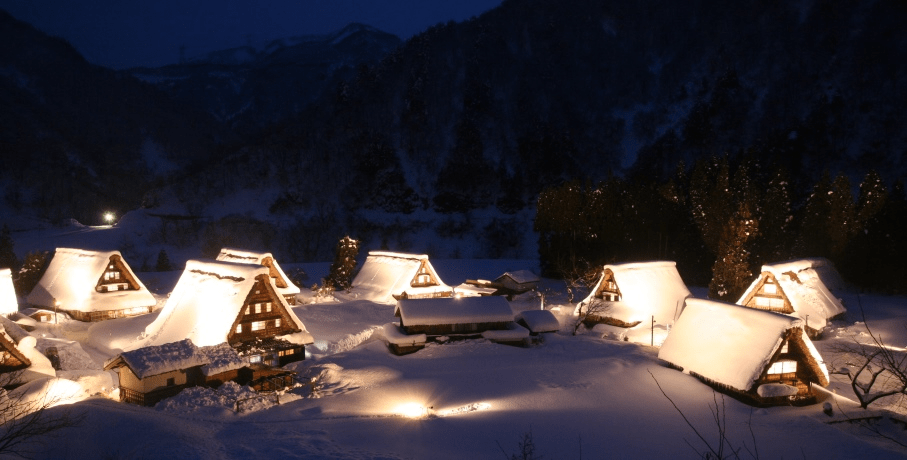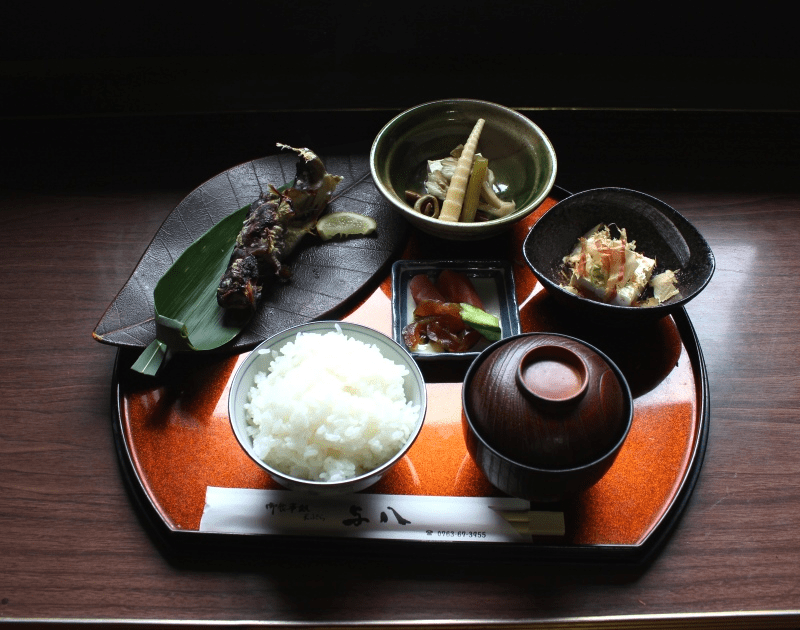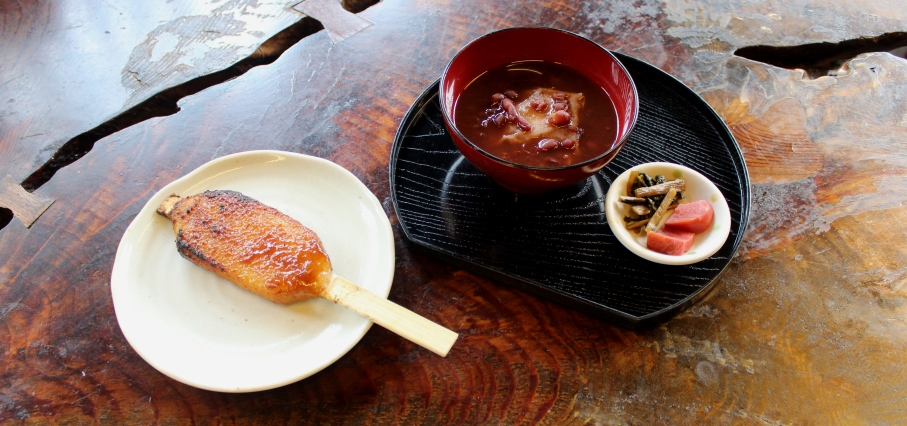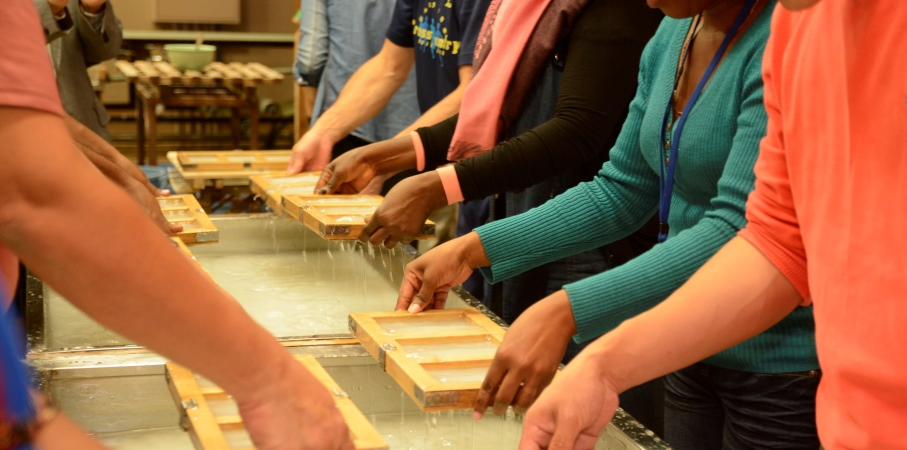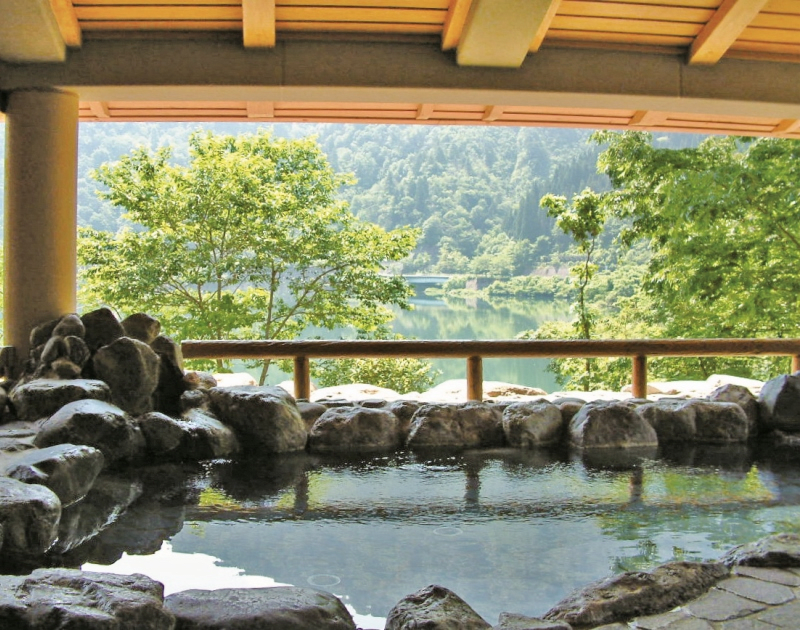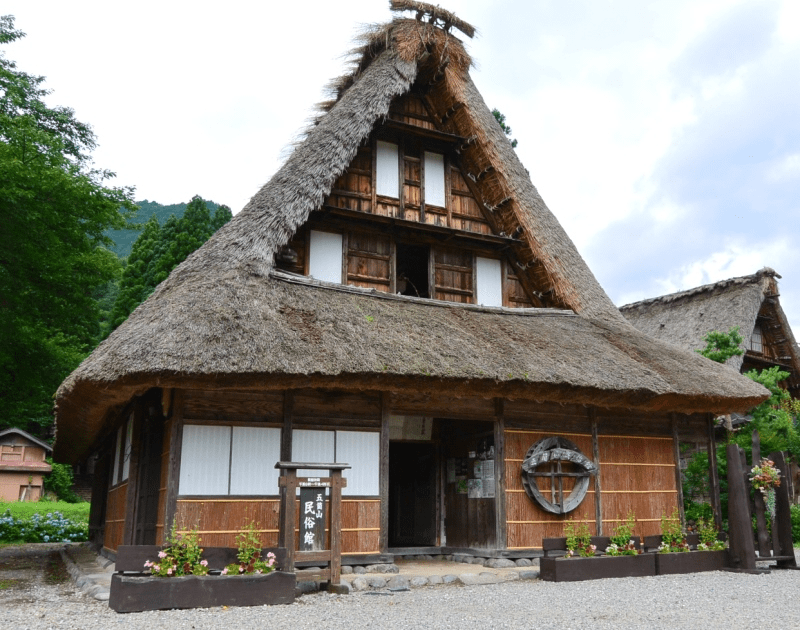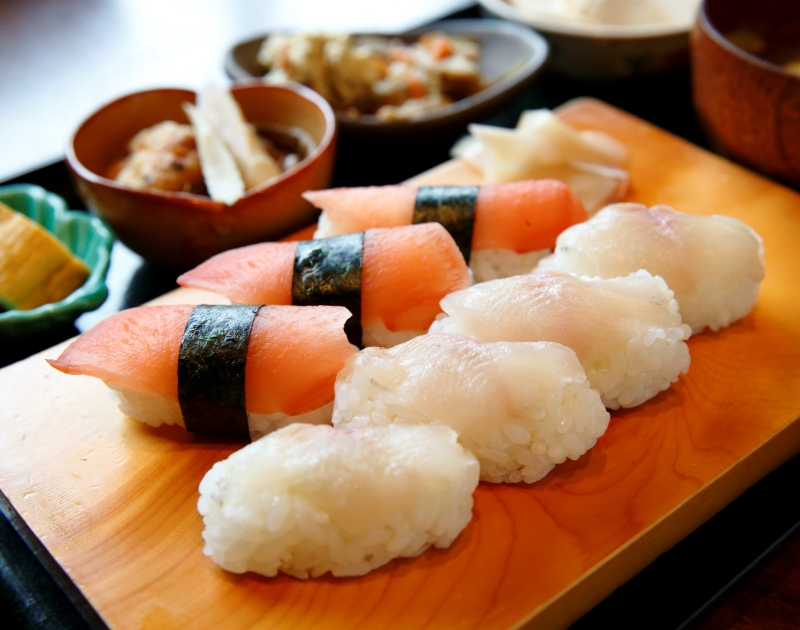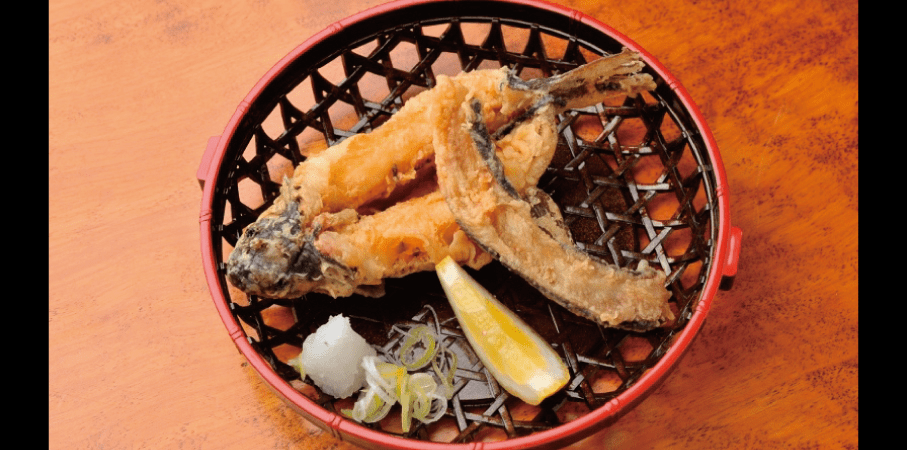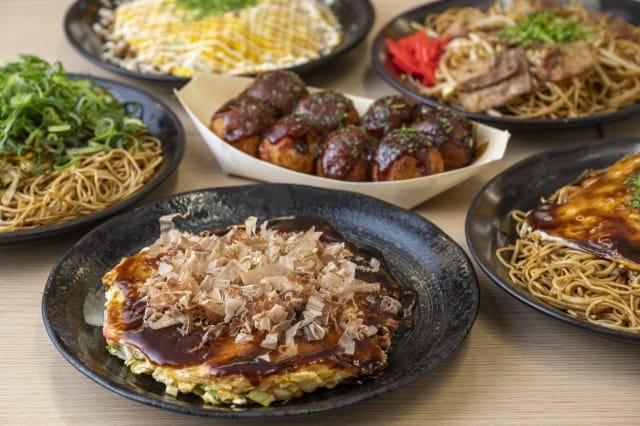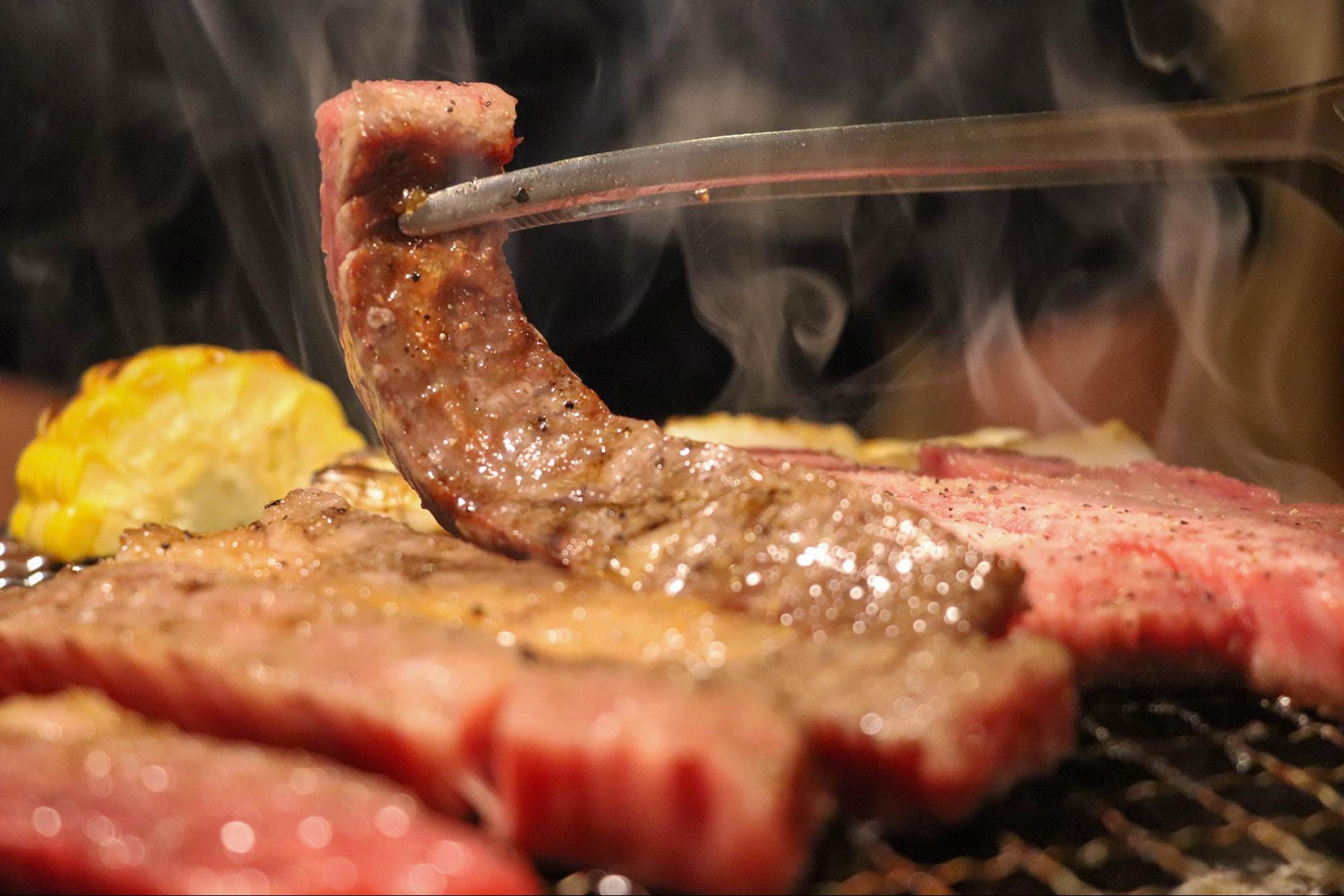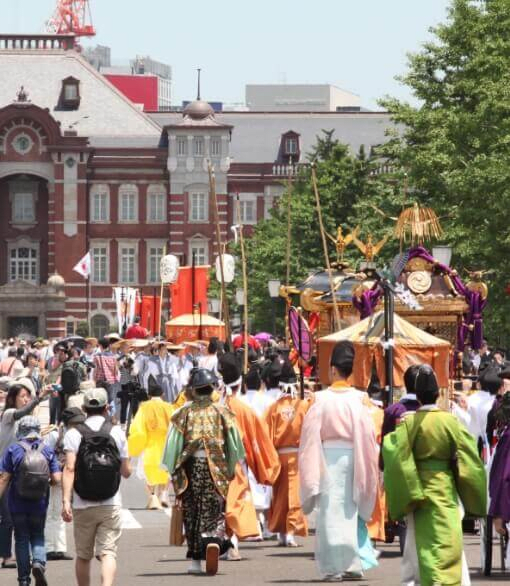Kanazawa to Gokayama 2026: Complete Guide with Local Experiences & Hidden UNESCO Gems
Kanazawa, located in Japan's Hokuriku region, is a city that flourished as a major castle town from the 16th century until the late 19th century. Many powerful samurai families lived here, and it prospered as an economically rich cultural city.
Kanazawa is a city with many historical spots, including streets where old samurai residences and Geisha houses remain. Around Kanazawa, there is a notable attraction - the Gokayama area, where rural village houses and landscapes from hundreds of years ago are preserved exactly as they were.
This time, we will introduce the highlights of Gokayama that you definitely want to visit together with Kanazawa, recommended spots, and access information from Kanazawa to Gokayama. As an author who has actually visited the area, I will explain the attractions of Gokayama in detail, so please read the article to the end.
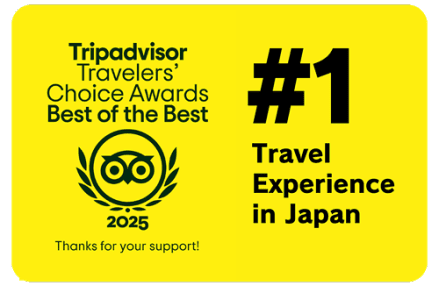
Table of Contents
-What is Gokayama?
-Must-See Spots in Gokayama Explained by an Author Who Actually Experienced Them!
-3 Restaurants Where You Can Enjoy Exquisite Japanese Cuisine in Gokayama
What is Gokayama?
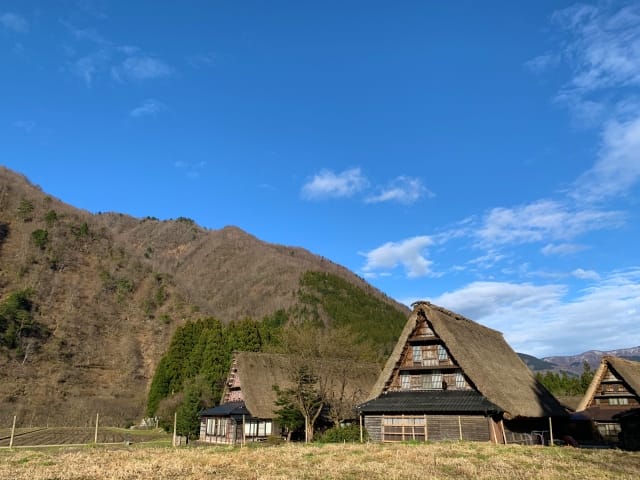
Gokayama is a settlement area located in Toyama Prefecture in Japan's Hokuriku region. It is a mountainous area surrounded by steep mountains and rivers, and because human traffic was difficult and due to its unique natural environment, a distinctive culture different from surrounding areas was cultivated.
Traditional culture has been carefully passed down to the present day, and the characteristic folk houses and village scenery from hundreds of years ago are preserved exactly as they were. The precious wooden architecture and inherited culture have been evaluated and registered as a World Heritage site.
In Gokayama, there are villages where folk houses built in a unique architectural style called Gassho-style are gathered. These are wooden Japanese houses characterized by triangular shapes and Thatched roof roofs, with some of the oldest ones built over 300 years ago.
Such villages are surrounded by green mountains, creating a place where you can see scenery that looks like a Japanese fairy tale.
Differences between Gokayama and Shirakawa-go

Gokayama:
- Located in Toyama Prefecture, an area with small-scale and quiet Gassho Style Villages such as Ainokura Gassho Style Village and Sugenuma Gassho Style Village. You can enjoy simple and natural rural mountain scenery.
Shirakawa-go:
- Located in Gifu Prefecture, famous for having large-scale Gassho Style Villages. It has developed as a tourist destination with many restaurants and shops, and many visitors come.
Both Gokayama and Shirakawa-go are settlements with Gassho-style Houses around the Shogawa River.
Shirakawa-go is located in Gifu Prefecture and is a very famous spot for having Gassho Style Villages designated as World Heritage sites. Throughout the year, many tourists visit from all over Japan and around the world.
There are about 100 Gassho Style Houses, and there are many hotels, restaurants, and gift shops using these houses. Nighttime illumination events are also held regularly.
On the other hand, Gokayama is a settlement area located in Toyama Prefecture. The charm of Gokayama is that it is smaller in scale than Shirakawa-go, and you can enjoy the quiet rural mountain atmosphere. Since there are far fewer tourists visiting compared to Shirakawa-go, you can relax and enjoy sightseeing quietly.
Why is the Kanazawa to Gokayama Route Popular?

Since the Gokayama area is a mountainous area surrounded by high mountains, it is a difficult area to access, but convenient express buses for tourism depart from Kanazawa.
Kanazawa was land that developed as a major castle town from the 16th century to the late 19th century and was the cultural center of this region.
The Gokayama area was under the rule of the Kaga Domain, which governed present-day Kanazawa, until the mid-19th century. Therefore, it is historically and culturally deeply related to Kanazawa.
After touring Kanazawa City and then visiting Gokayama, access is easy and you can understand the historical background well. Since you can enjoy the charm of Gokayama more deeply, it is a popular route chosen by many travelers.
Gokayama Tourism Requires Half a Day to a Day and a Half
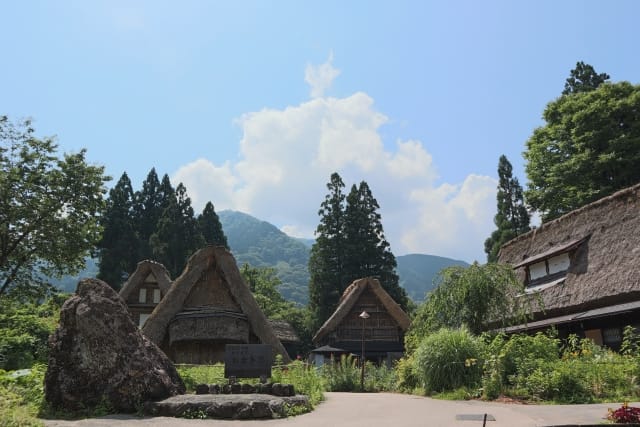
To fully enjoy touring Gokayama, you need half a day to a day and a half.
For those who want to see traditional architecture such as Gassho-style houses and enjoy the beautiful scenery of rural mountains, secure about half a day.
When departing from Kanazawa by bus or shinkansen + bus, travel time takes 2-3 hours round trip. When using buses, you also need to act according to the bus timetable.
With about 6 hours, you can leisurely tour houses and museums, eat lunch, and stroll through the rural mountains at a relaxed pace to enjoy the beautiful scenery.
For those who want to enjoy the beauty of Gokayama more thoroughly, it is recommended to secure about a day and a half and stay at a hotel in Gokayama. Natural hot springs well up in Gokayama, and there are quiet hotels with hot springs in the mountains.
During the day, tour the villages with Gassho-style houses, and in the evening through the next morning, enjoy hot springs, spa treatments, and beautiful natural scenery. You can also enjoy local cuisine dinners such as soba noodles and river fish dishes, allowing you to savor the charm of Gokayama thoroughly.
How to Get to Gokayama from Kanazawa?
To Ainokura Gassho Style Village:
- Take the Hokuriku Shinkansen from Kanazawa Station (approx. 13 minutes) → Get off at Shin-Takaoka Station, transfer to the World Heritage Bus (approx. 58 minutes) → Get off at Ainokuraguchi bus stop → Walk for approx. 5 minutes (approx. 1 hour 15 minutes)(4,080 yen)
To Suganuma Gassho-style Village:
- Take the reservation-only express bus from Kanazawa Station bound for Gokayama, Shirakawa-go, or Takayama → Gokayama Suganuma bus stop → Walk for about 5 minutes (about 1 hour 10 minutes)(2,200 yen)
- Take the Hokuriku Shinkansen from Kanazawa Station (approx. 13 minutes) → Get off at Shin-Takaoka Station, transfer to the World Heritage Bus → Get off at Suganuma bus stop (approx. 73 minutes) → Walk for approx. 2 minutes(about 1 hour 30 minutes)(4,280 yen)
From Kanazawa to Gokayama, you can access using shinkansen and buses.
To Ainokura Gassho Style Village, one of the World Heritage designated sites in Gokayama, travel from Kanazawa Station by shinkansen to Shin-Takaoka Station, then access from there using an express bus.
For buses, use the World Heritage Bus that operates in the Gokayama and Shirakawa-go areas.
When visiting Suganuma Gassho-style Village, another World Heritage designated site from Kanazawa, using the reservation-only express bus from Kanazawa Station allows easy travel with just one bus.
Also, from Ainokura Gassho Style Village to Suganuma Gassho-style Village, you can travel in about 15 minutes using the World Heritage Bus.
Since the World Heritage Bus only operates during the day, when using it, be sure to check the timetables for both departure and return trips.
<Information>
World Heritage Bus:https://www.kaetsunou.co.jp/company/sekaiisan/
Hokuriku Railway the reservation-only express bus:https://www.hokutetsu.co.jp/highway-bus/takayama/
Must-See Spots in Gokayama Explained by an Author Who Actually Experienced Them!
From here, I will explain the must-see spots in Gokayama that I actually visited and explored on-site. For tourists traveling from Kanazawa to Gokayama, this journey offers an incredible opportunity to experience Japan's most authentic traditional architecture.
Villages with Traditional Gassho-style Buildings Standing in Rows
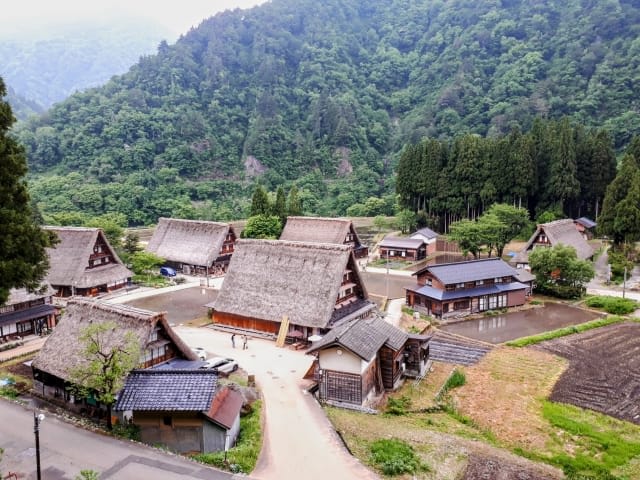
In the Gokayama area, first visit the representative villages to see the traditional Gassho-style houses standing side by side.
In Gokayama's villages, not only the houses but also the village gardens, forests, and storehouses have been carefully preserved and have remained virtually unchanged for hundreds of years. Even today, people continue to live here, engaging in agriculture, traditional crafts, and running restaurants and hotels.
In Gokayama, sericulture industry and saltpeter production were once actively practiced. Washi paper made from raw materials harvested in Gokayama's mountains is also a regional specialty, and the traditional craft techniques continue to be passed down today.
The old-fashioned rural scenery was a special sight that evoked strangely deep nostalgic emotions in me, even though I wasn't born and raised there.
The villages are very small, so you can tour everything in about 2 hours. However, since the changing sky throughout the day and its harmony with the surrounding nature is extremely beautiful, I recommend staying for at least one full day to truly appreciate the beauty at a leisurely pace.
Differences Between "Ainokura Village" and "Suganuma Village" in Gokayama
Ainokura Village:
-Features 20 Gassho-style houses. There are also guesthouses and gift shops using Gassho-style buildings. From the observation deck, you can see spectacular views overlooking the village.
Suganuma Village:
-Features 9 Gassho-style houses. A quiet village with the Gokayama Folklore Museum, a museum displaying saltpeter production materials, and an observation deck.
Gokayama has two representative Gassho-style villages: Ainokura Village and Suganuma Village.
In both villages, you can tour Gassho-style houses that have been preserved for hundreds of years, and you can also use restaurants and cafes housed in Gassho-style buildings. There are also gift shops where you can buy local specialties.
Ainokura Village is located on a plateau and has 20 Gassho-style houses. From the observation deck on the high ground, you can see spectacular views looking down at the village surrounded by high mountains. You need to climb an uphill path for a few minutes, but the spectacular view makes it definitely worth the effort. It's also recommended as a photo spot.
Suganuma Village is an even smaller settlement than Ainokura Village. It has museums and exhibition halls displaying valuable folk materials. It's a simple and quiet mountain village where you can spend relaxing time. The observation deck on a small hill even has an elevator.
Buildings Designated as National Important Cultural Properties
The greatest characteristic of Gokayama's villages is the houses built in the distinctive architectural style called Gassho-style.
The characteristic triangular roofs are shaped to make it easier to shed snow from the roof in this land with extremely heavy snowfall. The materials primarily use chestnut wood, and the roofs are thatched roofs covered with bundled plants such as Japanese pampas grass.
Among Gokayama's houses, the precious buildings designated as National Important Cultural Properties are the Iwase Family Residence and Murakami House. Both are still used as residences today, and travelers can visit these homes and tour the interiors with guidance from the residents.
Iwase Family Residence
Source:Official website
The Iwase Family Residence is a Gassho-style house built in the 18th century. Located at the midpoint between Ainokura and Suganuma villages, it's a 5-story building and the largest house of its kind in Japan. When you tour the house, the Iwase Family members will tell you about the house's features and history.
The 3rd to 5th floors preserve the sericulture workshops that were the main industry of this region. This house once housed a total of 35 people, including family members, who lived and worked here. When I actually saw the building, I was surprised by its size and magnificence, which seemed incredible for something built nearly 300 years ago.
People still actually live there today, and I was impressed by the sturdiness of Gassho-style architecture, which continues to be used despite being wooden construction in harsh natural environments.
The residents make tremendous efforts in terms of money and labor to manage this precious architecture. Those interested in unique architectural styles should definitely take time to thoroughly tour this large and magnificent Gassho-style house.
<Information>
Address: 857-1 Nishiakao-machi, Nanto City, Toyama Prefecture
Business Hours: 9:00 AM - 4:30 PM
Closed: Thursdays
Phone Number: 0763673338
Official Website: https://www.iwaseke.jp/
Murakami House
Source:Official website
Murakami House is one of the oldest Gassho-style houses, built in the 17th century. This nearly 400-year-old architecture has been preserved almost as it was originally, without modification, and is designated as a National Important Cultural Property.
Murakami House is 4 stories tall, and when you enter, there's an old Japanese hearth called "Irori" in the center of the living room. The Irori is essential equipment for Gassho-style houses, and the smoke from the Irori has the effect of strengthening the building by smoking it.
When I visited, I was able to sit around the Irori and listen to stories about the village's culture and history from the head of the Murakami family. The house also contains folk materials related to local industries such as saltpeter production and washi paper production, which you can freely tour after hearing the stories.
Since I applied in advance through their website, I was also able to watch performances and dances of Gokayama folk songs. I was truly moved by the simple yet deeply flavorful folk song melody of "Kokiriko Bushi."
Furthermore, in the garden, there's a precious camellia tree that has bloomed every year for about 300 years. This is definitely a recommended spot to visit when you come to Gokayama.
<Information>
Address: 742 Kaminashi, Nanto City, Toyama Prefecture
Business Hours: 9:00 AM - 4:00 PM
Closed: Tuesdays and Wednesdays
Phone Number: 0763662711
Official Website: https://www.murakamike.jp/index.html
Traditional Village Night Illuminations
Source:Official website
At Ainokura Gassho Style Village, special nighttime illuminations are held several times a year. From late 2025 onwards, illuminations are scheduled for September, and again in January 2026. During the illumination events, be sure to view the village from the observation deck on the high ground.
The rustic houses floating in the darkness of night create a scene like something from a fairy tale. Especially in winter, when deep snow accumulates in the village, you can witness an even more fantastical sight illuminated by gentle lighting.
While this is a smaller-scale illumination compared to those held in Shirakawa-go, the advantage is that you can experience an atmosphere like a hidden sanctuary.
Since there are no buses operating at night from cities like Kanazawa or Shin Takasaki, those who wish to see the illuminations should either stay overnight locally or visit by car using tour services.
<Ainokura Village>
Address: Ainokura, Nanto City, Toyama Prefecture
Business Hours: 8:30 AM - 5:00 PM
Closed: Irregular holidays
Phone: 076-366-2123
Official Website: http://www.gokayama-info.jp/?post_type=see
<Suganuma Village>
Address: Suganuma, Nanto City, Toyama Prefecture
Business Hours: 9:00 AM - 5:00 PM
Closed: Irregular holidays
Phone: 076-367-3008
Official Website: https://suganuma.info/
Gokayama's Local Cuisine Including Soba and Tofu
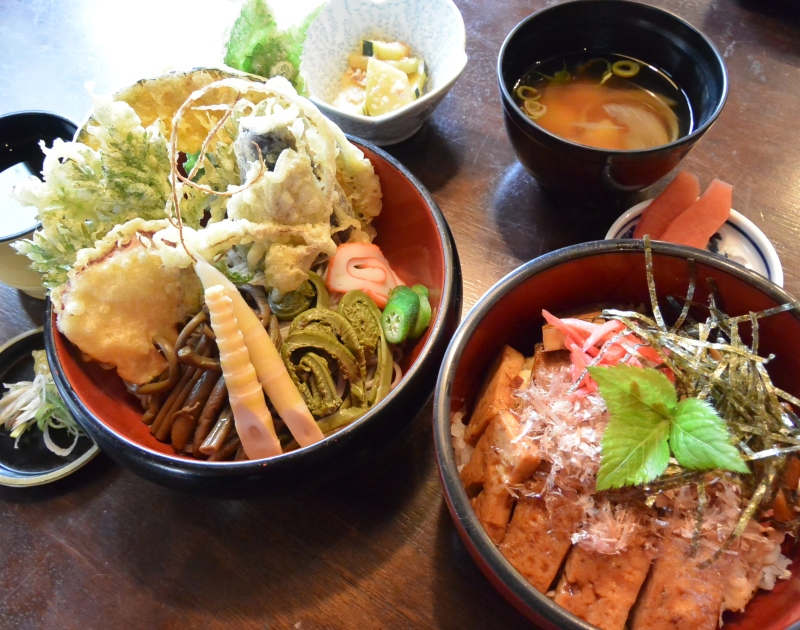
Source:Official website
When you come to Gokayama, enjoy local dishes such as soba and Gokayama tofu.
Both Suganuma Village and Ainokura Village have several small restaurants that you can use after touring the traditional houses. All the shops are housed in Gassho Style buildings.
Here are four restaurants where you can enjoy attractive local food while taking in the Gassho Style interior and nostalgic village scenery.
Matsuya (Ainokura Gassho-zukuri Village)
Source:Official website
Matsuya is a restaurant where you can eat Gokayama's local dishes such as soba and seasonal Japanese style set meals. Located in Ainokura Gassho Style Village, you can enjoy your meal while viewing the Gassho-style houses.
At Matsuya, the menu changes seasonally, and you can enjoy four different types of set meals throughout the year. When I visited in September, the "Zaru soba set meal" was a popular menu item. This is a hearty menu where you can enjoy soba made with Gokayama's clean water and tempura of local vegetables.
The soba was fresh and had a fragrant, refreshing taste. The tempura eggplant was crispy on the outside and tender on the inside, allowing you to enjoy the natural taste of vegetables without unnecessary seasoning.
Depending on the season, when I visited it wasn't particularly crowded, so I could enjoy lunch leisurely. Since there's also a gift shop attached, be sure to stop by Matsuya when you visit Ainokura Village.
<Information>
Address: 445 Ainokura, Nanto City, Toyama Prefecture
Business Hours: 9:00 AM - 5:00 PM
Closed: Irregular holidays
Phone: 076-366-2631
Official Website: http://www.gokayama-matuya.com/
Aikuraya (Ainokura Gassho-zukuri Village)
Source:Tabelog
Aikuraya is also a restaurant located in Ainokura Gassho Style Village. You can eat dishes using the local specialty Gokayama tofu and soba made with local vegetables inside a Gassho-style house.
Aikuraya is a small restaurant where the owner handles the cooking alone, and its old-fashioned atmosphere is charming.
From the abundant variety of soba available, I ordered "Mountain vegetable soba" and Gokayama tofu.
Gokayama tofu is a very famous ingredient as Gokayama's specialty gourmet food. Compared to tofu commonly eaten in Japan, it's characterized by its high density and firm texture. The Gokayama tofu I ate at Aikuraya had an excellent rustic flavor where you could strongly feel the aroma and taste of soybeans.
You can also order sweet Japanese-style light meals and coffee. Another pleasant point is that all menu items are reasonably priced compared to other restaurants.
If you want to have a meal or light break in Ainokura Village, be sure to try Aikuraya.
<Information>
Address: 710 Ainokura, Nanto City, Toyama Prefecture
Business Hours: 9:00 AM - 4:00 PM
Closed: Irregular holidays
Phone: 076-366-2815
Official Website: https://www.shokoren-toyama.or.jp/~nanto-ajiyado/?tenpo=%E5%90%88%E6%8E%8C%E8%8C%B6%E5%B1%8B%E7%9B%B8%E5%80%89%E5%B1%8B
Yohachi (Suganuma Gassho-zukuri Village)
Source:Official website
Yohachi is a Japanese restaurant located within Suganuma Gassho-style Village. Located beside the Shogawa River, you can eat local dishes using river fish, tempura, and other specialties. The restaurant interior is entirely tatami, and the style is to remove your shoes and sit on tatami to eat.
I ordered the Iwana trout set meal. This menu includes grilled iwana trout with salt, rice and soup, and a side dish of Gokayama tofu.
The large iwana trout, packed with meat, was very tender with no fishy taste. When eaten, it was piping hot with a refreshing, natural flavor perfectly enhanced by the salt seasoning.
This is a restaurant where you can dine quietly in a nostalgic shop with large beams that give a sense of history and tatami. Unfortunately, there are no table seats, so please note that those who are uncomfortable sitting on tatami should be aware.
<Information>
Address: 177 Suganuma, Nanto City, Toyama Prefecture
Business Hours: 9:30 AM - 5:00 PM
Closed: Irregular holidays
Phone: 076-367-3955
Official Website: https://gokayama-info.jp/archives/537
Arai (Suganuma Gassho-zukuri Village)
Source:Official website
Arai is also located in Suganuma Gassho-style Village and is a small cafe restaurant where you can eat traditional Japanese food and desserts. In addition to soba and udon, you can eat local confections that have been eaten in the Gokayama area since ancient times, such as Gohei mochi and Tochimochi zenzai.
For dessert after my meal, I had "Gohei mochi" and pumpkin-flavored ice cream.
Gohei mochi is a light meal that has been traditionally eaten in this area, consisting of rice cake with a sweet and savory sauce made with soy sauce and miso.
The Gohei mochi, which retains the rice texture well, had a rustic and flavorful taste with its walnut-containing miso sauce. The ice cream made with traditional pumpkins grown in Gokayama was also excellent, with a strong pumpkin flavor.
Since there are benches and tables outside the shop as well, I highly recommend enjoying your meal while viewing the village scenery.
<Information>
Address: 503 Suganuma, Nanto City, Toyama Prefecture
Business Hours: 8:45 AM - 4:45 PM
Closed: Irregular holidays
Phone: 076-367-3217
Official Website: https://gokayama-info.jp/archives/531
Gokayama Washi Paper Making Experience - A Local Specialty
Source:Official website
Famous as a specialty product of Gokayama is the Gokayama washi paper. Made from paper mulberry that grows in Gokayama's harsh natural environment, Gokayama washi paper is characterized by its durability and uniform paper quality. This specialty product has been presented to feudal lords in Kanazawa for hundreds of years, representing the historic cultural connection from Kanazawa to Gokayama.
Even today, traditional papermaking methods are passed down as a traditional craft. At Gokayama Washi no Sato in Taira Roadside Station, you can participate in workshops to make Gokayama washi paper using traditional methods.
I watched a video of the traditional manufacturing process before creating original postcards with flower and butterfly patterns. Although there were delicate tasks requiring concentration, the staff taught me carefully, making the work enjoyable. You can take home the finished cards as gifts.
Also, at Washi no Sato, beautiful lampshades and card cases made from washi paper are sold. All the products and exhibited works showcase the soft texture of washi paper and traditional Japanese colors so beautifully that they are captivating to look at.
You can apply for workshop participation through the official website, so those interested should definitely make a reservation.
<Information>
Address: 215 Higashinakae, Nanto City, Toyama Prefecture
Business hours: 9:00 AM - 5:00 PM
Closed: Irregular holidays
Phone number: 0763-66-2223
Official website: https://gokayama-washinosato.com/
Gokayama Onsen - Enjoying Quiet Mountain Scenery
Natural hot springs bubble up in Gokayama, where you can bathe while viewing the beautiful mountain scenery. With little foot traffic and few cars, the very quiet environment allows you to spend deeply relaxing time at Gokayama's hot springs.
Gokayama has both hot spring facilities where you can pay fees to rent towels for bathing and rest, as well as hotels with hot springs. Some hot spring hotels allow non-guests to use just the hot spring facilities.
Here I'll introduce three hot spring spots I highly recommend, perfect for visitors traveling from Kanazawa to Gokayama.
Gokayama Onsen Gokasansou
Source:Official website
Gokayama Onsen Gokasansou is a hot spring hotel located between Ainokura Gassho Style Village and Shirakawa-go. Located on the mountainside surrounded by rich nature, this hotel is characterized by its quiet and relaxing environment.
The baths include both outdoor and indoor baths, and from the outdoor bath you can view the beautiful scenery of Gokayama's mountains and the Shogawa River. When I stayed there, both the hotel and bathhouse were very quiet, and soaking in the hot water in such an environment was deeply relaxing for both body and mind.
Dinner featuring iwana and other river fish and local ingredients is hearty and very luxurious. Those who don't like fish can request a fish-free menu change.
Non-guests can also use the hot springs, so those wanting to bathe in hot springs while viewing Gokayama's beautiful mountain scenery should definitely try Gokasansou.
<Information>
Address: 333-1 Tamukai, Nanto City, Toyama Prefecture
Check-in time: 3:00 PM / Check-out time: 10:00 AM
Closed: Irregular holidays
Phone number: 0763-66-2316
Official website: https://www.gokasansou.com/
Kuroba Onsen
Source:Official website
Kuroba Onsen is a hot spring facility located beside the Shogawa River. You can bathe in abundant natural hot springs that bubble up from Gokayama, and there's also a restaurant on the second floor.
Though Kuroba Onsen is a relatively small-scale hot spring facility, its facilities are well-equipped. The facility has outdoor baths, indoor baths, cold water baths, and saunas. The indoor bath water temperature is quite hot, allowing you to warm your body thoroughly during cold seasons.
The outdoor bath has a slightly lower water temperature than the indoor bath, allowing you to soak and relax for longer periods. From the outdoor bath, you can see the Shogawa River and a nearby dam lake, so I soaked longer in the perfectly温度ed water while leisurely enjoying the scenery.
The second floor has a rest area with tatami and massage chairs, so after soaking slowly in the hot water, I recommend cooling down in the rest area for a while.
Those wanting to casually enjoy hot springs in Gokayama should definitely try Kuroba Onsen.
<Information>
Address: 1098 Kamitaira Hosojima, Nanto City, Toyama Prefecture
Business hours: 10:00 AM - 9:00 PM
Closed: Tuesdays
Phone number: 0763-67-3741
Official website: http://www.gokayama-kankou.com/contents4.html
Akaokan
Source:Official website
Akaokan is a long-established hot spring hotel near Suganuma Gassho Village. It's located just across the river from the Iwase Family Residence, the largest gassho-style house in Japan that was also introduced in this article.
Akaokan is a hot spring hotel characterized by its old-fashioned retro atmosphere. Though the facilities are old, they are well-maintained and comfortable. There's a public indoor bath where you can soak in alkaline natural hot springs said to be good for the skin while viewing Gokayama's mountains through the glass.
After bathing, I stayed in a traditional Japanese room with tatami and a traditional heating system called kotatsu, enjoying a local cuisine dinner. Western-style rooms with beds are also available.
Non-guests can also use just the hot springs. Those wanting to bathe in hot springs relatively close to Suganuma Village or interested in retro hot spring hotels should definitely check out Akaokan.
<Information>
Address: 396-1 Nishiakaomachi, Nanto City, Toyama Prefecture
Business hours: Check-in time: 2:00 PM / Check-out time: 10:00 AM
Closed: Irregular holidays
Phone number: 0763-67-3321
Official website: http://www.akaokan.com/
If You're Interested in Gokayama's History and Traditions, "Gokayama Folklore Museum" is Also Recommended
Source:Official website
If you have a deep interest in Gokayama's history and traditions, be sure to visit the Gokayama Folklore Museum. Within Suganuma Gassho-style Village, there is the Gokayama Folklore Museum which displays 200 items related to Gokayama's culture and lifestyle. By paying an entrance fee of 200 yen, you can also enter the adjacent Saltpeter production museum, the Saltpeter House.
Once inside, numerous folk crafts were displayed in a relatively small two-story Gassho-style House. The house serving as the museum also has a 200-year history. Looking at the old farming tools and shoes used for walking in deep snow, you can very realistically imagine the lifestyle of the people who have lived on this land.
What I found particularly fascinating was the display of baskets that were used to cross steep rivers in ancient times. I could feel the history of Gokayama, where until very recently, human movement was truly difficult due to the harsh terrain. For those traveling from Kanazawa to Gokayama, this museum provides valuable insight into how isolated and challenging life was in this mountain region.
To go up to the second floor, you need to climb steep stairs. Those with small children or those with weak legs and back should be careful.
<Information>
Address: 436 Suganuma, Nanto City, Toyama Prefecture
Business Hours: 9:00 AM - 4:30 PM
Closed: Irregular holidays
Phone Number: 0763673652
Official Homepage: https://suganuma.info/spot/see
3 Restaurants Where You Can Enjoy Exquisite Japanese Cuisine in Gokayama
In the Gokayama area, there are other restaurants where you can enjoy exquisite Japanese cuisine. Enjoy Japanese food using ingredients unique to Gokayama, such as river fish sushi and fish dishes, and exquisite soba and tempura made with clean water, at popular restaurants.
Iwana
Source:Official website
Iwana is a popular restaurant attached to Kamihira Roadside Station. Roadside Station refers to rest stops along roads throughout Japan that sell local specialties.
At Iwana, you can eat fresh sushi of river fish, which is also a local specialty, so many people visit Kamihira Roadside Station even from distant places. This makes it a perfect stop for visitors making the journey from Kanazawa to Gokayama.
At Iwana, you can eat sushi of Iwana trout as well as Rainbow trout. River fish has a gentler taste compared to ocean fish, with modest fat content and a delicate flavor. River fish sushi is a rare dish that can only be eaten in areas near clear streams, and I was moved by its deliciousness when I tried it for the first time.
Hida beef sushi, a specialty of neighboring Gifu Prefecture, is also very popular. Kamihira Roadside Station also has a gift shop where you can purchase local specialties including Gokayama tofu.
If you're in the area, be sure to stop by Iwana and Kamihira Roadside Station.
<Information>
Address: 72-1 Nishiakao-machi, Nanto City, Toyama Prefecture
Business Hours: Weekdays 11:00 AM - 3:00 PM, 5:00 PM - 8:00 PM
Saturdays and Sundays 11:00 AM - 8:00 PM
Closed: Tuesdays
Phone Number: 0763673267
Official Homepage: https://gokayama-info.jp/archives/529
Gokayama Gorobei Restaurant
Source:Official website
Gokayama Gorobei Restaurant is a restaurant where you can eat local cuisine such as Iwana dishes and soba, as well as Japanese food, in a Gassho-style private house. Located in Suganuma Gassho-style Village, inside the building you can enjoy the interior unique to Gassho-style houses, including spacious Tatami halls and large Irori (traditional hearths).
I ordered tempura and salt-grilled Iwana trout. At Gorobei, Iwana is grilled over an Irori, a traditional fireplace. When I visited, dozens of Iwana skewered on sticks were being grilled over the Irori, and I couldn't help but take photos of this fascinating sight that can only be seen in this land.
Salt-grilled Iwana trout takes about 30 minutes to serve when grilled over the Irori, but while waiting, the Irori scene and traditional interior were very interesting, and I wasn't bored at all. This authentic experience perfectly captures what makes the journey from Kanazawa to Gokayama so rewarding for visitors seeking traditional Japanese culture.
The freshly grilled salt-grilled Iwana trout was cooked tender to the core, with just the right amount of juiciness and exquisite flavor. The deep-fried Iwana trout is also excellent, so please try it.
<Information>
Address: 906 Suganuma, Nanto City, Toyama Prefecture
Business Hours: 10:00 AM - 4:00 PM
Closed: Irregular holidays
Phone Number: 0763673502
Official Homepage: https://www.goro-bei.com/
Zippensha
Source:Tabelog
Zippensha is a restaurant where you can enjoy many tofu dishes using Gokayama tofu, including deep-fried tofu, as well as exquisite soba made with Gokayama water. The restaurant offers both traditional Japanese-style seating on tatami mats and regular table seating.
I ordered cold soba with tempura called "Tenzaru soba." It comes served with tempura made from local vegetables and Gokayama tofu tempura alongside the soba. The refreshing and crisp taste of the soba paired perfectly with the juicy, crispy fried tofu tempura.
I also recommend trying the "Tofu dengaku," where you can enjoy Gokayama tofu served with three different types of miso paste.
From the restaurant's windows, you can see beautiful greenery and the sparkling Shogawa River, allowing you to enjoy your meal while taking in the scenic views.
If you want to try exquisite soba and tofu dishes, definitely consider visiting Zippensha.
<Information>
Address: 747 Kaminashi, Nanto City, Toyama Prefecture
Business Hours: 11:00 AM - 2:00 PM
Closed: Wednesdays
Phone Number: 0763662744
For Those Who Want to Fully Enjoy Both Gokayama and Kanazawa, Sightseeing with Local Guide Commentary is Recommended
For those who want to thoroughly explore not only Gokayama but also Kanazawa, participating in tours where local guides show you around the city is highly recommended.
Kanazawa, which flourished as a cultural city, has many historical spots with unique charm and beauty, as well as gourmet spots. Listen to local guides explain the history and culture, and deeply experience these attractions on your journey from Kanazawa to Gokayama.
Kanazawa Half-day Historical Walking Tour
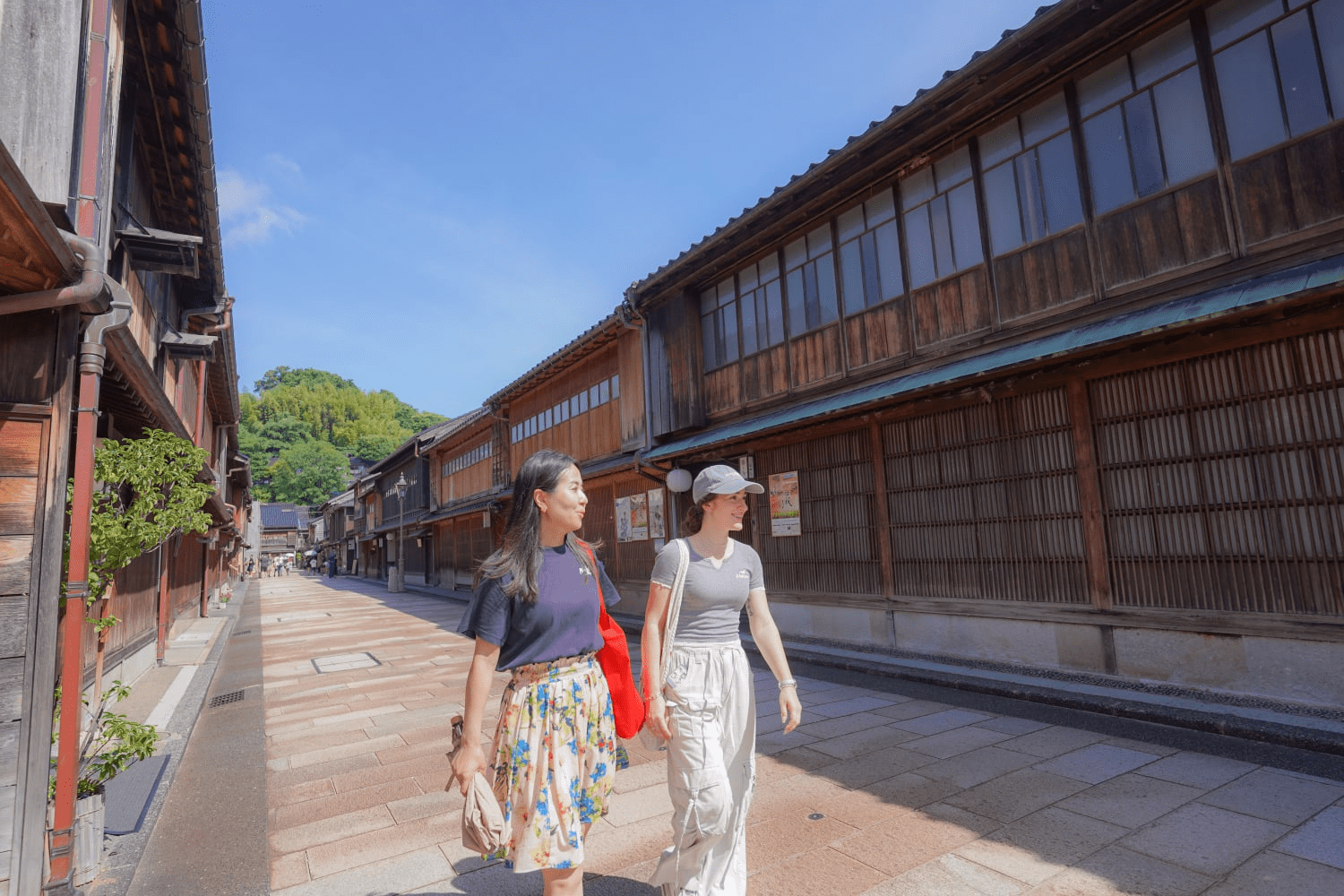
The Kanazawa Half-day Historical Walking Tour is a 5-hour tour where you explore the center of Kanazawa City with a local guide. You'll visit Omicho Market, where Kanazawa's abundant ingredients gather, and the beautiful Japanese garden Kenrokuen Garden, as well as stroll through the Higashi Chaya District, where old streetscapes are preserved as they were in the past.
By participating in this tour, you can efficiently enjoy the beauty of the cultural city Kanazawa City in half a day. At Kenrokuen Garden, considered one of Japan's three most beautiful gardens, you'll stroll through traditional gardens and enjoy lunch of the local dish Jibuni while viewing beautiful fountains.
After lunch, you'll also visit a traditional sweets museum and old Geisha Houses, fully experiencing Kanazawa's rich culture before continuing your travels from Kanazawa to Gokayama.
This tour is especially recommended for first-time visitors to Kanazawa. Join this tour where you can explore the city with a friendly guide and thoroughly enjoy Kanazawa's attractions in half a day.
<Information>
Meeting Point: FamilyMart+Drug Komeya Kanazawa Musashi Store/35-1 Shimotsutsumicho, Kanazawa City, Ishikawa Prefecture
Tour Area: Kanazawa City
Start Time: 10:00 AM
Kanazawa Night Foodie Tour
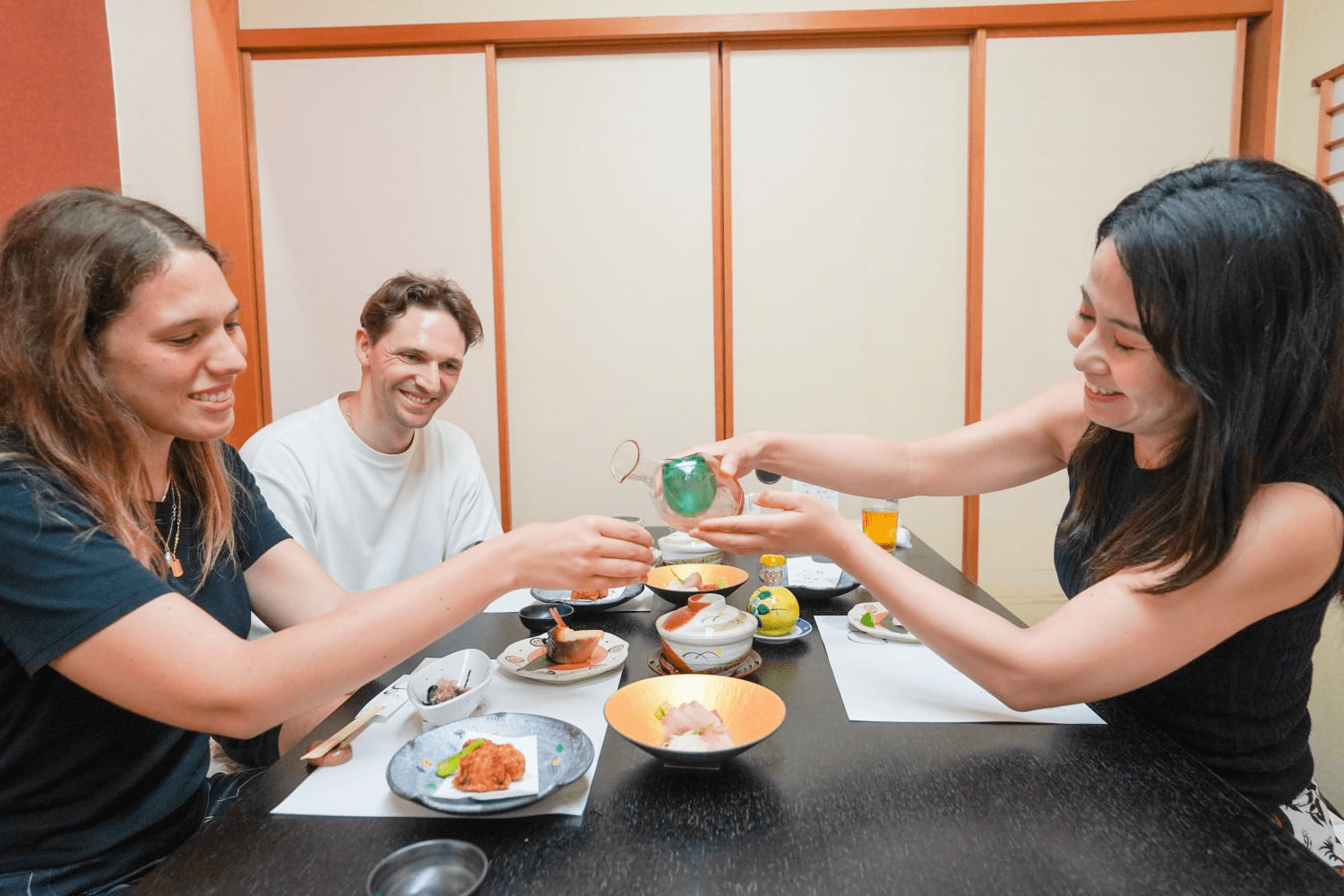
For those who want to thoroughly enjoy Kanazawa's gourmet scene, try participating in the Kanazawa Night Foodie Tour. In this tour, a local guide will take you to three restaurants and bars in nighttime Kanazawa City.
At elegant Japanese-style restaurants with Kanazawa's characteristic atmosphere, you can savor authentic Japanese cuisine. Taste local food at casual restaurants beloved by locals, and finish at a sake bar enjoying Kanazawa's famous local sake.
When moving from restaurant to restaurant, you'll stroll through the nighttime Samurai Residences where old streetscapes remain. You'll surely feel the full charm of Kanazawa, whose beautiful streetscapes are often compared to Kyoto, perfect for those planning their route from Kanazawa to Gokayama.
For those who want to know recommended shops and dishes among Kanazawa's abundant gourmet options, definitely participate in the tour and learn from the local guide.
<Information>
Meeting Point: In front of the Korinbo Ramoda bldg/2-4-30 Korinbo, Kanazawa City, Ishikawa Prefecture, 2F
Tour Area: Kanazawa City
Start Time: 6:00 PM

